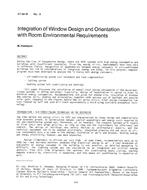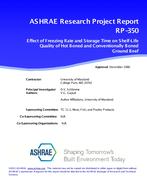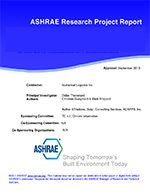Variable-speed drives (VSDs) are a popular retrofit for variable-air-volume ventilation fans, yet few measurements of annual energy savings have been performed. To eliminate the need for a year of pre-retrofit and a year of post-retrofit data, one previously developed measurement technique (applied to two air handlers in a single building) relied on correlations of fan power to volumetric flow rates combined with histograms of flow data. There is a need for more performance measurements, particularly when flow data are not available. To the extent that the demand for air flow depends on thermal gains and building occupancy and use patterns, fan power may be correlated to these directly. One advantage to this approach is that knowledge of temperature and solar loading profiles, as well as expected occupancies, may be obtained more easily than is the case for air flow. Fan power is modelled as a function of outside temperature only for four variable-air-volume systems outfitted with VSD controllers. The curves developed are used to estimate the savings of VSDs over variable inlet vanes in the same air handlers. Practical problems, such as filtering data and the choice of sampling intervals, are discussed.
KEYWORDS: measuring, energy consumption, variable volume air conditioning, fans, variable speed motors, controls, energy conservation, air handling units, performance, air flow, heat gain, buildings, occupancy, temperature, solar radiation, calculating, outdoor temperature, ventilation, electricity consumption
Citation: Symposium Papers, Baltimore, MD, 1992
Product Details
- Published:
- 1992
- File Size:
- 1 file , 1.1 MB
- Product Code(s):
- D-17853


